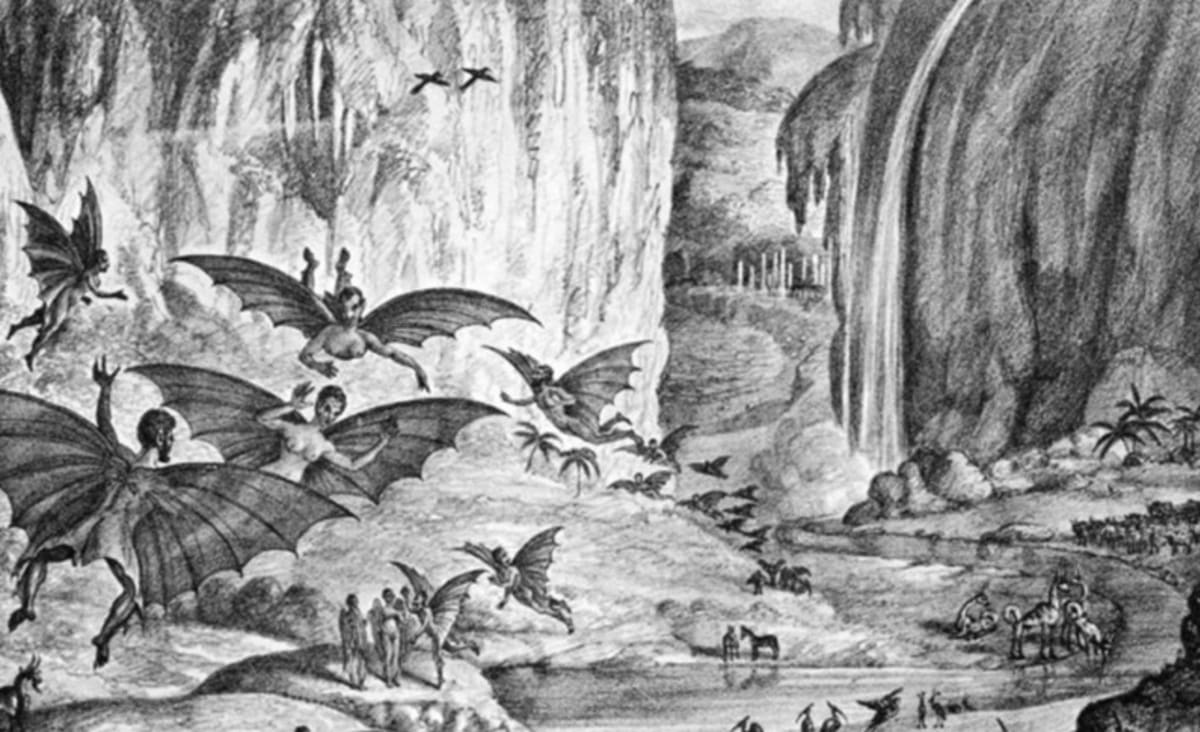
interestingengineering.com
Moon Bats, Venusian Dinosaurs, and the History of Alien Life
Ideas about alien life are centuries old. Here are some of the weirdest that serious scientists have come up with.
Culture & Entertainment
Nowadays, we take the search for extraterrestrial life very seriously, using everything from radio telescopes to seeking out laser pulses in the night sky that might be alien communications. We try to imagine what such alien life might look like and admit that, for the most part, we have no idea and leave such things to the imaginations of science fiction writers.
"A real alien would be so far from anything we've ever imagined that we would barely be able to comprehend its existence," Sci-fi author Aaron S. Rosenberg told Popular Mechanics in May 2021. "And we would seem just as completely, bafflingly bizarre to it."
It's no wonder then that those who tried to envision alien life over the centuries would have some wildly divergent ideas about what it might be like.
Like our modern "little green men" concept of aliens, which are really just modified versions of human beings, scientists, philosophers, and writers throughout the ages have fallen back on what they already knew in the natural world and simply made it alien, coming up with some rather wild ideas in the process.
Speculation about aliens goes all the way back to the early Greek philosophers, Democritus and Epicurus, who reasoned that Earth was just one of many worlds in the universe and that those worlds were likely inhabited by lifeforms just as Earth was.
The Epicurean Roman poet Lucretius wrote of the possibility of life on other worlds, saying, "nothing in the universe is unique and alone and therefore in other regions there must be other earths inhabited by different tribes of men and breeds of beasts."
One of the earliest written speculations on possible alien life on another world comes from the Greek-speaking Lucian of Samosata, who lived from 125 to at least 180 CE. Born in Roman Syria, which includes modern-day Turkey, Lucian was a witty satirist whose work drips with sarcasm which he often turned against his fellow writers of the era.
Writers during his time were used to liberally mixing truth with myth, so Lucian wrote his Vera Historia, or A True Story, as a send-up of his contemporaries. In it, he describes a journey to the Moon and all of the strange and wonderful creatures he finds there, including three-headed vultures, fleas the size of elephants, and humans that sweat milk.
While clearly a work of fantasy — Lucian didn't pretend that it was anything but — it is still one of the earliest written attempts to describe what life on another world might look like, and it too distorted or inverted known life-forms to make them seem alien to us.
The Middle Ages
There are folks tales from around the world about people or spirits of the Moon and Sun, like some versions of the Japanese The Tale of Princess Kaguya where Princess Kaguya is sent to Earth by the people of the Moon during a war in the heavens, many of these don't necessarily see the Moon as other-worldly or its inhabitants as particularly alien.
In Europe, meanwhile, Aristotlean philosophy held significant sway during the Middle Ages, but theologians of the era — generally the only Europeans with anything like an advanced education — were much more accepting of the idea of alien life than the ancient Greek Aristotleans were.
Using a geocentric model of the universe, though, led to some interesting ideas about what alien life might be like, all of it filtered through the prism of Christian theology.
"It may be conjectured that in the area of the sun there exist solar beings, bright and enlightened denizens, and by nature more spiritual than such as may inhabit the moon. … [W]hilst those on earth are more gross and material," wrote Nicolas of Cusa in the 15th century.
His writing on the potential for other worlds and alien denizens different in nature than life on Earth were influential and prompted a great deal of theological debate about the nature of alien life, particularly around whether Christ's death and resurrection also redeemed alien life along with humanity.
"If it be inquired if men exist on that world and whether they have sinned as Adam sinned, I answer no, for they would not exist in sin and did not spring from Adam," wrote the French theologian William Vorilong.
Vorilong would also go on to write that "[a]s to the question whether Christ dying on this earth could redeem the inhabitants of another world, I would answer that he is able to do this even if the worlds were infinite. But it would not be fitting for him to go unto another world that he must die again."
These medieval ideas about alien life being uniquely distinct from humanity, in that they were not the offspring of Adam and Eve, would influence later perspectives on alien life elsewhere. Specifically, many would come to see other worlds and alien life as idyllic places where a kind of pre-Fall innocence reigned.
https://interestingengineering.com/moon-bats-venusian-dinosaurs-and-the-history-of-alien-life
























































